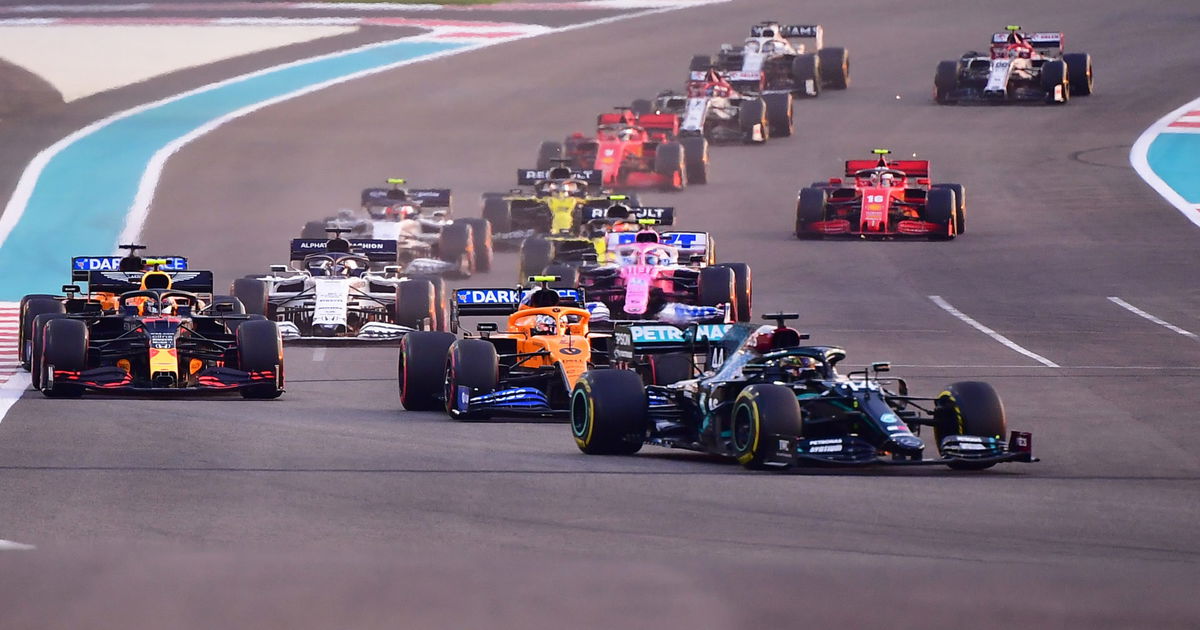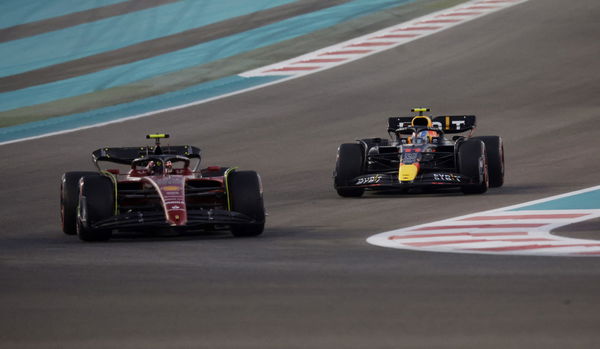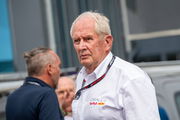
Reuters
Formula One F1 – Abu Dhabi Grand Prix – Yas Marina Circuit, Abu Dhabi, United Arab Emirates – Mercedes’ Lewis Hamilton in action at the start of the race Pool via REUTERS/Giuseppe Cacace

Reuters
Formula One F1 – Abu Dhabi Grand Prix – Yas Marina Circuit, Abu Dhabi, United Arab Emirates – Mercedes’ Lewis Hamilton in action at the start of the race Pool via REUTERS/Giuseppe Cacace
Formula 1 is set to undergo a massive overhaul with its 2026 regulation changes. The recent change in regulations saw turbo-hybrid era monsters Mercedes lose their grasp on their crown as Red Bull beat them to claim the constructor’s championship. Subsequently, the next change in the ordinance may see a whole different dynamic being introduced to F1.
Watch What’s Trending Now!
ADVERTISEMENT
DRS was introduced in 2011 as a part of assisting drivers while overtaking. The DRS adds about 10-15 mph depending on the track and other external conditions. When a driver is within a second’s reach of the car in front, he can open the flaps in the rear wing to diffuse the leading car’s advantage of clean air. But how does reverse DRS work?
Reverse DRS will electronically limit the aero performance of the car, which is just the opposite of how DRS currently works. Similar to DRS, the cars have to be within a certain gap between them to activate the reverse DRS, which will put the leading car at a disadvantage and enhance the overtaking chances.
ADVERTISEMENT
The FIA’s new rules to make the competition close are works in progress and FIA is still in the ideation phase. This will make the mid-field more competitive and strips off the competitive advantage that the top dogs might possess. To top it off, the cost-cap ceiling applied to teams now stops the big teams to lavishly spend money.
ADVERTISEMENT
F1 reveals potential plans with reverse-DRS in 2026
The FIA’s idea of implementing Reverse DRS was to make the race even more interesting and competitive. Max Verstappen pulling away from the rest of the field was a common sight this year. In order to prevent that from happening on a regular basis, the implementation of the same will help to hold back the race leader to increase competition from those chasing his tail.

Reuters
Formula One F1 – Abu Dhabi Grand Prix – Yas Marina Circuit, Abu Dhabi, United Arab Emirates – November 18, 2022 Ferrari’s Carlos Sainz Jr. and Red Bull’s Sergio Perez in action during practice REUTERS/Leonhard Foeger
Moreover, F1 is further exploring the potential possibilities with reverse DRS. According to Motorsport, “This would most likely be as a means for it to be used as an effective replacement for DRS in helping boost the performance of chasing cars – through either less wing on the straights or even more in the corners.”
ADVERTISEMENT
Top Stories
Who Are Lando Norris’s Parents? Meet Adam Norris and Cisca Wauman

Max Verstappen’s Siblings: Everything We Know About Victoria, Blue Jaye, Jason Jaxx, and Mila Faye

“Filthy Games Were Played”: Helmut Marko Buries Christian Horner for Conspiring Against Him

Fans Celebrate Lewis Hamilton’s First Title As McLaren Crowns F1 Champ ‘the GOAT’

Who Are Yuki Tsunoda’s Parents? Everything You Need to Know About Minako and Nobuaki Tsunoda

Ross Brawn, F1’s outgoing Managing Director of the motorsport, revealed that they were planning on the best usage for active aero dynamics for the 2026 rule changes. The decision to implement the same will require thorough research and evaluation before coming to a decision. However, F1 is prepared to dig deep and find out more about the possibilities and the implications for the same.
ADVERTISEMENT
Aerodynamics looks more “appealing” for the 2026 regulation change
F1 is quickly getting more popular by the day and it is doing everything to keep the sport more entertaining and competitive. Their new regulation change was a success by the looks of it and the onus now falls on them to keep the viewers intrigued. The next rule change occurs after 4 years and the board is planning some exciting changes for the future.
Reverse DRS ?🤔 #F1 2026 pic.twitter.com/oSrW81W7mU
— Jasper Issac (@jasperissac) December 1, 2022
Ross Brawn said, “One of the big things about the 2026 car is whether we have active aerodynamics. I think that’s an efficiency step which is very appealing.” He further continued, “But, active aerodynamics, we semi have them at the moment with DRS, as DRS is active aerodynamics.”
ADVERTISEMENT
Furthermore, he added, “If you have active aerodynamics, then of course you could affect the car in front. You could have a proximity [that] once you get within a certain degree, the car in front loses a little bit of downforce and you gain a little bit of downforce. There are tricks you can play with that. It becomes an opportunity.”
He concluded by stating, “I’m not saying we would do that, but it becomes an opportunity. So, the 2026 car is lessons learned from what we have now and I think we’ll incorporate some form of active aerodynamics.”
WATCH THIS STORY: Lewis Hamilton’s Charitable Masterpiece, Sergio Perez’s Mexican Tribute- F1 Drivers Get Creative With Monaco GP Lids
ADVERTISEMENT
Whether F1 will go ahead with the idea and introduce the reverse DRS or not remains to be seen. However, it has certainly divided the fans to have mixed opinions about the same. If implemented properly, it could be a huge game changer for F1 – fans and teams alike. Are you in favor of introducing the reverse DRS or do you feel the current system works fine?
ADVERTISEMENT
ADVERTISEMENT
ADVERTISEMENT

